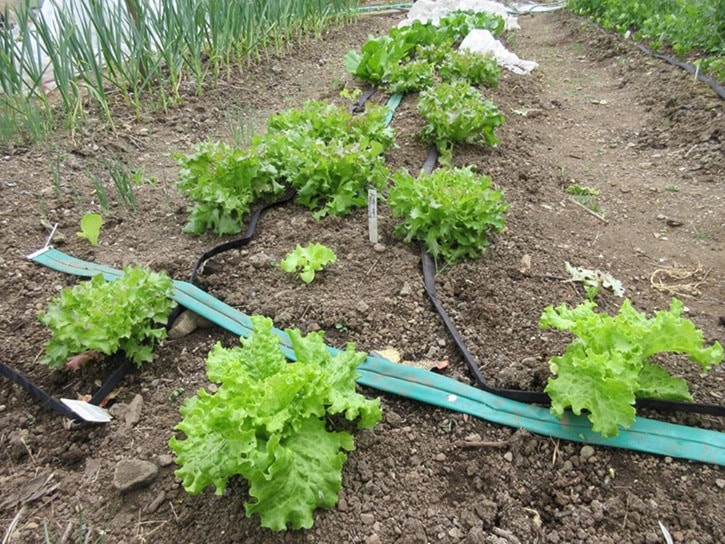If your garden is anything like mine, ravenous slugs and pillbugs appear out of nowhere like teenagers’ friends at dinnertime, so you might want to start the more susceptible ones like brassicas and lettuce indoors. When these are transplanted into the garden before they become root-bound, handled gently and placed into a fertile, wet hole, they grow very well.
In our short, hot growing season we can get our plants off to a fast start by giving them lots of nitrogen. Spread a complete organic fertilizer at the product’s recommend rate, add on quarter inch layer of compost and dig this into the top six inches.
This fertile background is enough for outside-sown crops like peas, carrots, beets and turnips. For transplants I dig in extra fertilizer under each spot I’ll place the plants to give them an extra boost — between one quarter and half a cup each. Depending on the size of the plant, make a hole, fill it with water and then transplant.
Spraying with compost tea about every three weeks boosts nutrition and suppresses disease. This year I’ve added high-nitrogen fish fertilizer to ferment along with the compost for all crops except peas as this may inhibit their podding. Nitrogen encourages lush leaf growth that absorbs more sun, creating more protein-rich chlorophyll and a tastier crop.
About two weeks before I expect fruiting crops to flower, I’ll switch from fish fertilizer to kelp in the compost tea as that will encourage fruit growth. You can keep spraying this tea every three weeks right through autumn and even on sunny winter days.
This “foliar” spray is powerful stuff! I’ve grown gardens on high-clay soils and my present sandy soil with equally strong crop responses to compost tea with concomitant boosts in flavour. The best time to spray is morning or evening as the stomata on the leaves are open then and will absorb more of the nutrients. I read that it’s a good idea to stop foliar spraying one to two weeks before harvest or the crops may retain some of the taste of the spray.
In ancient Greek times gardeners experimented watering with various concoctions, including sweet wine for the last three days to enhance flavour. I wonder if the wine god ever forgave them for their profligate behaviour.
I like to side-dress all my crops except peas with fertilizer four to six weeks after planting, hoe it in a bit and then hand-water to encourage soil animal life to take it further into the soil to become available to the plants. Fertile soils absorb and retain more water and can make the difference between success and failure during drought. Sandy soils like mine need constant inputs since these soils don’t retain water or humus well. We can gradually remedy this by adding clay to our compost heaps and spreading this on the garden each year since clay stabilizes compost so it doesn’t disappear as quickly in the garden.
I continue to sow some crops like lettuce, greens and brassicas in flats indoors every three weeks, switching to autumn and then winter types as the seasons progress and keep this up until it’s so cold they’ll do better in the cold frame. As one wise gardener commented “if you don’t keep planting until cold kills the last crop, you’re not planting enough.”
Frost overcomes the garden at different times each year, so it’s worth making the effort to grow as long as we can. Plants in the cold frame might even make it through the winter or may go dormant to become the first new crop in the spring. If the slugs don’t get them first.
